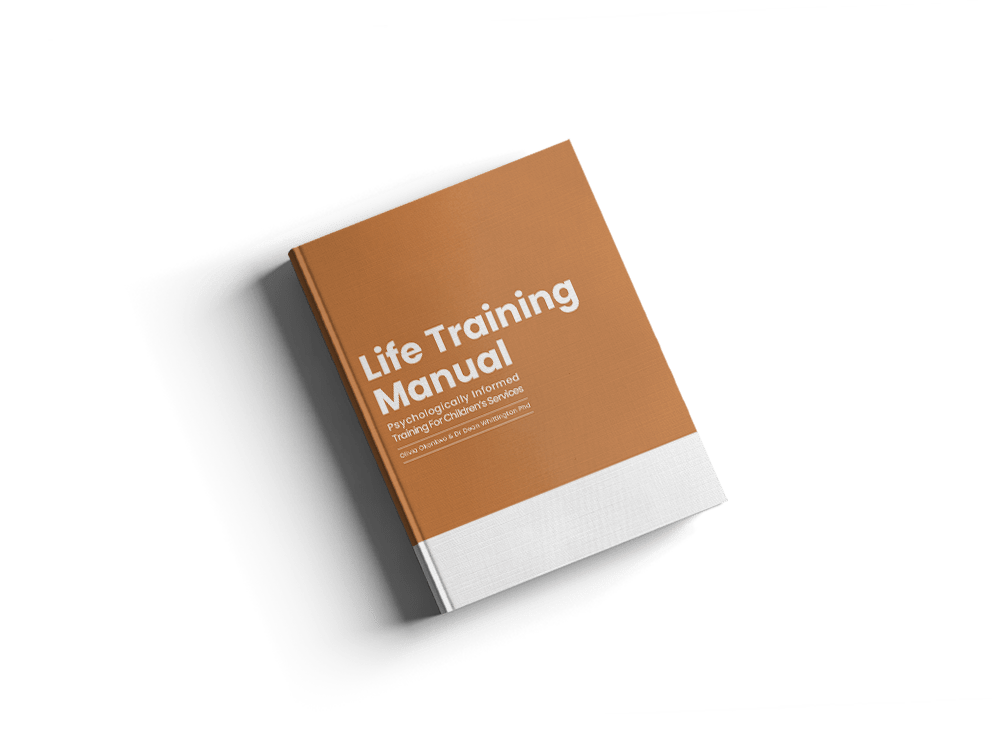LIFE Staff Training Manual

The LIFE training manual provides a way of bringing a group of practitioners together within a commonality in order to build a team elan. Through camaraderie and interconnection this helps to generate a secure base and insights around the impact of inter-generational trauma whilst building a life vision, developing recovery capital along with sustaining emotional recovery capital.
The PIE training is based upon the following components:
- The legislation that shapes the container (Bion, 1962) which then impacts on the way that practitioners interact on a micro level with the young people.
- Ensuring the practitioner is able to reflect on action and in action.
- Building on the young people’s strengths to generate emotional recovery.
- Undertaking a person centred approach to develop rapport and trust.
- Developing a secure base and knowing why this is vital for enhancing emotional well being.
- Understanding the role of defence mechanisms and how these arise along with their positive role for young people.
- Developing partnership working with other practitioners to generate a holistic form of care.
- Understanding the impact of complex trauma and how this shapes a sense of self.
- Developing insights around the formation of masculinities, the formation of the feminine and how this works within a polarity.
- Working with difference and how to develop insight into other peoples cultures and experiences .
- Working with scaffolding to build recovery capital.
- Looking after the self and working on issues around vicarious trauma.
- Adler’s (1913, 1932) concepts of inferiority/superiority, schemas of apperception, formation of private logic, development of teleological end goal and how this shapes the lifestyle.
- Laing’s (1960) concepts of double bind, elusion, formation of false self and the role of mental health as a positive dynamic for a negative ecological system .
- Bronfenbrenner’s (1979, 1986) role of the ecological system; how the macro world shapes the micro world of the individual.
- Roger’s (1959) concepts of genuineness, empathy, congruity and unconditional positive regard.
- Stack Sullivan (1953) and the ideas around the positive role of the ‘best friend’ and the formation of ‘security operations’.